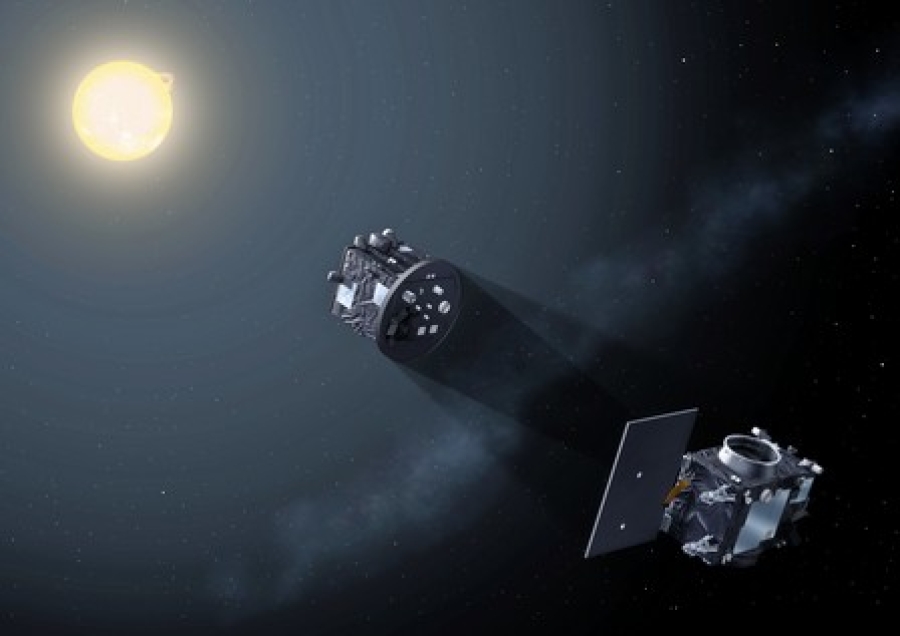Assembly of ESA’s Future Sun Watching Proba-3 Satellites, a Major SPACEBEL Project, Is Complete
Proba-3’s pair of satellites have been fully integrated and are now ready for a four-month test programme, simulating every aspect of the launch conditions and Space environment.
Like all Proba (Project for On-Board Autonomy) satellites, this technology demonstrator will test new Space technologies destined for future ESA missions at lower cost. The mission’s scientific goal is to study the solar corona, i.e. the hottest layer of the solar atmosphere with temperatures rising up to millions of degrees. Studying the corona is quite complex as it visible only for a few moments on Earth during rare total eclipses. Proba-3 has been designed to tackle this challenge while reducing diffraction issues – a phenomenon that is common to other solar observation missions – and improving overall visibility of the Sun’s surroundings.
Proba-3 comprises two satellites flying tandem at a distance of 144m and behaving like a unique spacecraft. The satellite equipped with a round 140 cm diameter disk will act as an occulter to create an artificial solar eclipse on a sustained basis thus allowing the other satellite to observe the halo around the Sun for up to 6 hours at a time.
Proba-3 is due for departure into Space on a PSLV launcher from India in 2024.
For many years, SPACEBEL has been bringing our expertise to this world’s first precision formation flying mission with the software design, development, production, integration and validation of
- the on-board software for both Proba-3 platforms,
- the satellite simulators,
- the control centre and mission centre.

©ESA
